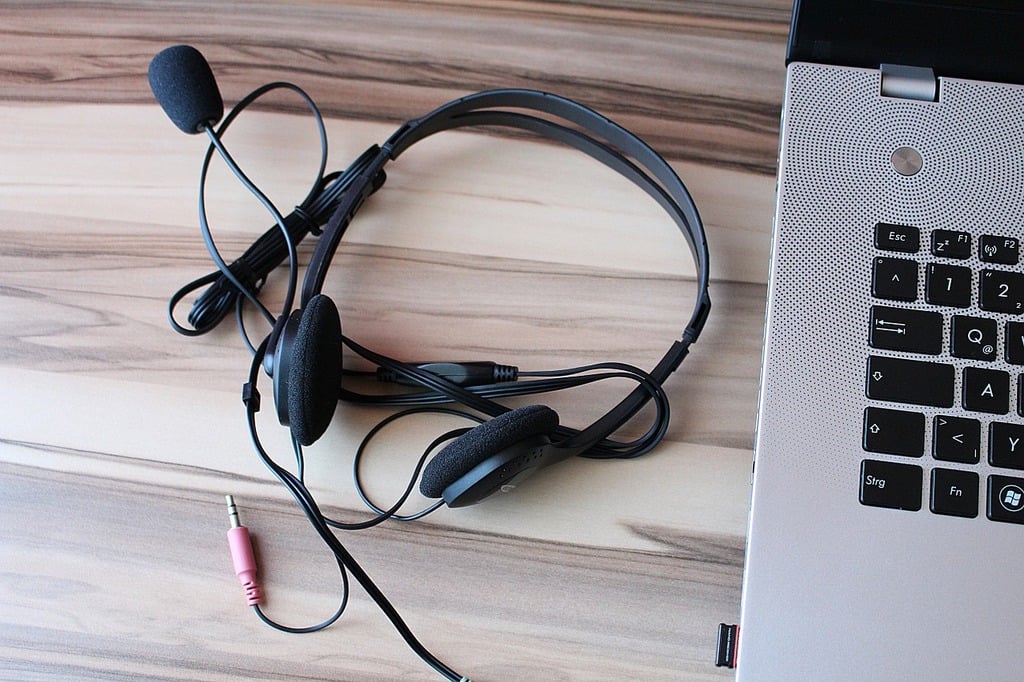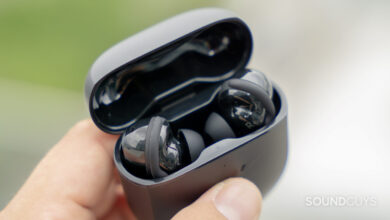Headset Tactical

Introduction
Tactical headsets are specialized communication devices designed to meet the demanding needs of military personnel, law enforcement, and security professionals.
These headsets serve multiple purposes, ranging from protecting the wearer’s hearing in loud environments to ensuring clear communication even in the most challenging conditions.
Whether you’re on a mission in a high-noise environment or simply need to communicate without interference, a good tactical headset can make all the difference. Tactical headsets often come with features like noise cancellation, water and dust resistance, and exceptional durability to endure the rigors of combat or training scenarios.
In this guide, we’ll dive into the critical aspects of tactical headsets, explore the key features to consider when choosing one, and review some of the best tactical headsets available on the market today. With the right knowledge, you can make an informed decision on a headset that will enhance your operational effectiveness and keep you connected when it matters most.
Key Features to Look for in a Tactical Headset
When selecting a tactical headset, it’s crucial to focus on features that ensure reliable performance in the field. Here are the most important factors to keep in mind when choosing the right tactical headset:
Noise Reduction and Hearing Protection
Tactical operations often occur in loud environments—whether it’s gunfire, explosions, or heavy machinery. A good tactical headset provides noise reduction features to protect your hearing from permanent damage. Headsets with active noise cancellation (ANC) or passive noise reduction (PNR) technology are designed to filter out harmful sounds while allowing critical communication to come through clearly. Some models even allow users to hear ambient sounds like footsteps while muting harmful noise peaks.
Hearing protection is a must-have in tactical headsets, as prolonged exposure to high decibel levels can cause irreversible hearing damage. Look for headsets that meet noise reduction rating (NRR) standards to ensure they provide adequate hearing protection.
Durability and Weather Resistance
Tactical headsets need to endure harsh conditions. Whether you’re operating in extreme heat, cold, rain, or dust, your headset should be rugged enough to withstand the elements. Durable materials, reinforced cables, and waterproof or dustproof ratings are essential features to consider. Military-grade headsets are often built to withstand shock, vibration, and extreme temperatures. This ensures that the headset remains operational even in the most demanding environments.
Communication Clarity
Clear communication is non-negotiable in tactical environments where split-second decisions can have life-or-death consequences. Tactical headsets are equipped with advanced microphones, often featuring noise-canceling technology to ensure your voice comes through clearly, even in high-noise areas. Look for headsets with boom mics or in-line mics that can pick up your voice without interference from background noise. Clear communication ensures mission success and safety in critical situations.
Comfort for Extended Use
Tactical missions or training exercises can last for hours or even days, so comfort is crucial when selecting a headset. Look for lightweight designs, padded ear cups, and adjustable headbands to ensure the headset remains comfortable even after long periods of wear. Some models come with gel or foam inserts that conform to your ears, reducing pressure points and providing a snug fit. Comfort is important not only for maintaining focus but also for preventing headaches or ear fatigue during extended use.
Wireless vs. Wired Options
When choosing between wireless and wired tactical headsets, each has its pros and cons. Wireless headsets offer greater freedom of movement, allowing operators to move without worrying about getting tangled in cords. However, they rely on batteries and may require frequent recharging. Wired headsets, on the other hand, provide a more reliable connection with no risk of signal loss or battery failure, but they can be restrictive in terms of mobility. Consider your operational needs when deciding between wired and wireless models.
Top 5 Tactical Headsets
Peltor ComTac III
The Peltor ComTac III is one of the most popular tactical headsets, particularly favored by military personnel and law enforcement agencies. It combines effective noise reduction with clear communication, making it ideal for use in noisy combat situations. The headset features an adjustable boom mic and integrates well with other communication systems. The ComTac III is also designed for comfort, with gel ear seals and a lightweight build, ensuring that it can be worn for long periods without causing discomfort.
Ops-Core AMP Communication Headset
The Ops-Core AMP Communication Headset is a high-end option designed for the most demanding tactical environments. It features 3D hear-through technology, which allows the user to hear ambient sounds and enhance situational awareness while protecting hearing from loud noises like gunfire. The AMP headset is modular, meaning it can be adapted with different accessories depending on mission needs. Its durability and weather resistance make it suitable for extreme conditions.
Sordin Supreme Pro X
The Sordin Supreme Pro X offers an excellent balance between comfort, durability, and audio quality. It’s a favorite among law enforcement and shooting enthusiasts due to its exceptional noise cancellation and sound clarity. The Supreme Pro X is water-resistant and features durable materials that can withstand harsh environments. The headset’s ergonomic design ensures comfort during extended periods of use, and its microphone delivers clear, interference-free communication.
Tactical Bone Conduction Headsets
Bone conduction headsets offer a unique approach to communication by bypassing the eardrum and transmitting sound directly to the inner ear through the bones of the skull. This technology allows users to keep their ears open, which is ideal for maintaining situational awareness while still being able to communicate. These headsets are especially useful in covert operations where discretion is key.
Silynx Clarus Pro
The Silynx Clarus Pro is known for its compact design and robust performance in tactical environments. It’s built with military specifications in mind, offering both wired and wireless communication options. The headset provides excellent noise reduction and has a built-in volume limiter to protect hearing. With its lightweight design and durable build, the Clarus Pro is ideal for professionals who need a reliable and high-performance communication system.
Importance of Noise Reduction in Tactical Environments
Noise reduction is a critical feature in tactical headsets, particularly for military and law enforcement personnel who work in high-decibel environments. The constant exposure to gunfire, explosions, and other loud sounds can result in hearing loss or permanent damage over time. Tactical headsets with noise-canceling technology protect the user’s hearing while still allowing them to stay alert to important ambient sounds.
Active noise cancellation (ANC) technology works by using microphones to pick up external sounds and generate sound waves that cancel them out, allowing the user to focus on communication. This is particularly useful in loud combat environments where split-second decisions are critical. Passive noise reduction (PNR) works by physically blocking sound through padded ear cups. Both forms of noise reduction help maintain situational awareness and ensure that critical commands are heard clearly, regardless of the surrounding noise levels.
Choosing Between Wired and Wireless Tactical Headsets
Deciding between a wired or wireless tactical headset can be a difficult choice. Both options have their own set of advantages and disadvantages. Wireless headsets provide greater mobility, which is important in dynamic environments where freedom of movement is key. However, they rely on battery life, and if the battery runs out during a mission, it could pose a significant problem. Wireless models may also experience signal interference in certain conditions, which could compromise communication.
On the other hand, wired headsets are typically more reliable as they don’t depend on batteries and provide a consistent connection without the risk of signal loss. The downside is that the cords can sometimes become a hindrance, especially in active combat situations. Operators need to weigh the importance of mobility versus reliability when deciding between wired and wireless options.
Step 3: Q&A Section
Q1: Why is noise reduction important in tactical headsets?
Noise reduction helps protect hearing from harmful sounds while ensuring clear communication in noisy environments. It allows users to hear critical commands and stay alert to their surroundings.
Q2: Should I choose a wired or wireless tactical headset?
The choice depends on your operational needs. Wireless headsets offer mobility but rely on battery life, while wired headsets provide a more reliable connection but limit movement.
Q3: How do bone conduction tactical headsets work?
Bone conduction headsets transmit sound through the bones of the skull, allowing users to hear without covering their ears. This helps maintain situational awareness while communicating effectively.
Conclusion
Choosing the right tactical headset is essential for effective communication and hearing protection in high-stakes environments. By focusing on key features like noise reduction, durability, comfort, and communication clarity, you can ensure that your headset meets the demands of your operations. Whether you choose a wired or wireless model, or opt for specialized technology like bone conduction, a high-quality tactical headset can greatly enhance your situational awareness and mission success.





